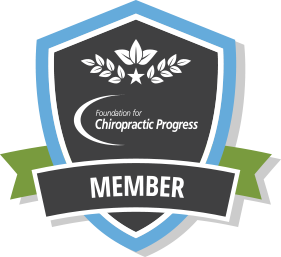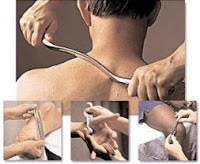
Your body’s
motion is controlled by the neuro-musculo-skeletal system. This motion system
is broken down into three groups based upon the function of the various tissues
within your body. The first group is known as the Active Subsystem which
consists of the muscles that create motion. The second group is known as the
Passive Subsystem which consists of the skeleton, ligaments, tendons, fascia,
and other connective tissue that hold your body together. The third group is
the Control Subsystem which consists of the brain, spinal cord, nerves, and
mechanoreceptors that control the motion of your body.
These
three subsystems must work together for normal, healthy motion. Even if you
have strong healthy muscles you cannot maintain overall wellness if your
Passive and Control subsystems are not as equally strong. Therefore if you are
trying to lift something without integration of these subsystems you will unable
to move any more weight than your muscles, joints, or nerves will allow. Balanced and full motion allows joints and
muscles to move smoothly and keep you moving well as you age.
The doctors at Life in Motion Chiropractic and Wellness approach treatment with three
principles in mind. The first is motion; problems with this affect all three of
the body’s subsystems. To effectively help a motion problem treatment solutions
must address the mechanical and neurological issues involved and our doctor’s
approach to this threefold:
- Chiropractic manipulative therapy unlocks, restores, and maintains joint motion. Joint
mobilization reduces restrictions and other posture and motion distortions. In
fact, freeing a compressed nerve or restoring motion can affect other parts of
the body via the Control Subsystem.
-
Myofascial therapy lengthens tight muscles and breaks up ligamentous and
fascial adhesions. Other benefits of this form of therapy can be pain relief,
which also affects the Control Subsystem, improved circulation, and general stress
reduction.
-
Therapeutic exercise, during which we teach you how to properly stretch
tight/facilitated muscles and strengthen weak/inhibited muscles.
Secondly,
we look for compensatory movement patterns in the body’s chain of motion. Your
body type, injuries, and lifestyle habits train you, over time, to
involuntarily and without thinking move your body in a unique pattern of motion
using your stronger muscles. Your joints and ligaments stretch in the direction
they are used and subsequently adhesions form along unused paths of motion. Therefore,
you begin to move along the path of least resistance, just as a piece of paper
bends along a crease the tissues of the body literally groove and fold in the
way they are being used. As these mechanically inefficient patterns of poor
posture and unbalanced motion progress, a “pain cycle” is created, the result
of which is a continuous loop of increased body stress, joint degeneration,
chronic pain, and recurring injury.
The
solution, which is the third principle of treatment at Life in Motion Chiropractic and Wellness, is the implementation of “the motion cycle” through
the use of postural retraining which helps to form new “life habits” and trains
the body to move with conscious, full range of motion. Free, balanced motion
reduces joint stress, relieves pain, and restores flexibility subsequently
breaking the “pain cycle”.
The
goal of treatment at Life in Motion Chiropractic and Wellness is to restore
balance, flexibility, and control which instills self-efficacy and helps to
keep your body moving naturally, feeling good, and aging well.









